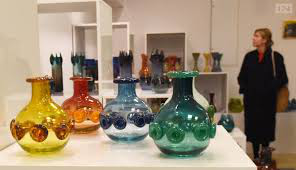


The Glass Institute of Krakow traces its origins back to 1931, when the buildings of the Match Factory "Znicz" on Lipowa Street were taken over by a new company. The shareholders were engineer Leon Bąkowski and entrepreneurs Dawid and Jakub Chazan, of Jewish descent. In 1932, the company launched a glassworks under the name "Krakowska Huta Szkła, inż. L. Bąkowski, D. Chazan i Ska," primarily producing vodka bottles for the State Monopoly, as well as wine bottles, mineral water bottles, and pharmaceutical glassware.
After World War II, the factory became state-owned, and the Krakow Glassworks were established. The new organization included, among others, the "Wawel" Glassworks and the Glassworks in Skawina. In the 1960s, a research center focusing on glass production was opened at Lipowa Street. In the early 1970s, it was merged with the glassworks and became a branch of the Warsaw Glass Institute (later the Glass and Ceramics Institute).
The Glass Institute in Krakow became one of Poland's leading centers for glass research. In the 1970s and 1980s, the facility also gained renown for producing artistic glass, known as "Krakow Glass." The vases, goblets, bowls, platters, candlesticks, and mugs produced there, designed by notable artists such as Jerzy Słuczan-Orkusz, Michał Jakubas, Zofia Pasek, and Marian Gołogórski, quickly became popular both in Poland and internationally. These products were renowned for their high quality, and each piece was hand-formed by skilled glassmakers, marked with an image of a dragon blowing a glass bubble.
Despite significant artistic and scientific successes, glass production ceased in 1998 due to economic difficulties. Nevertheless, the legacy of the Glass Institute in Krakow remains a key part of Poland's glass industry history.